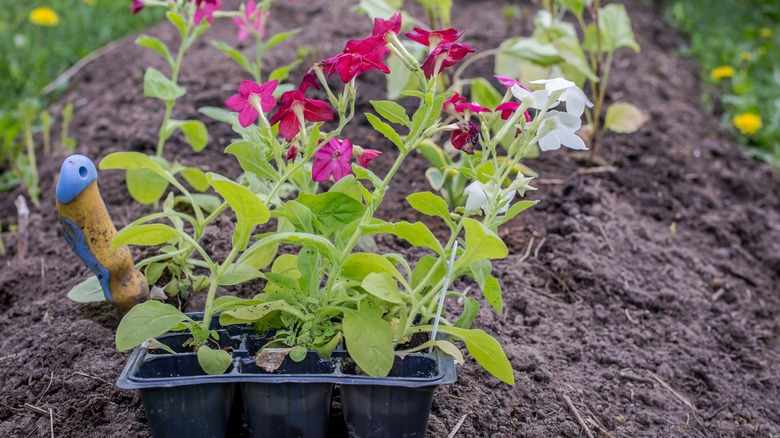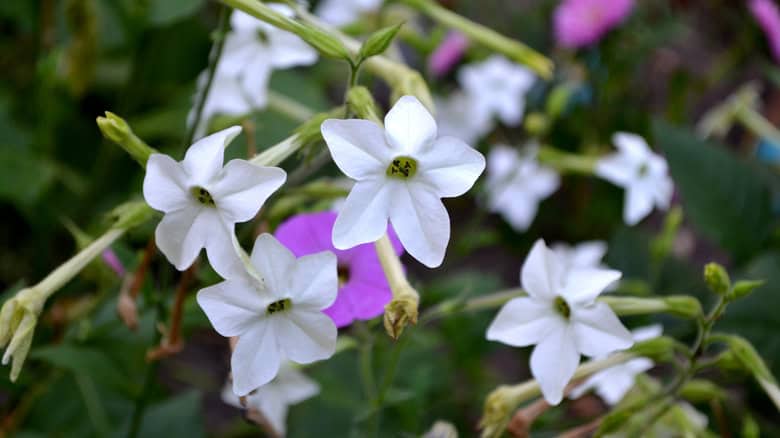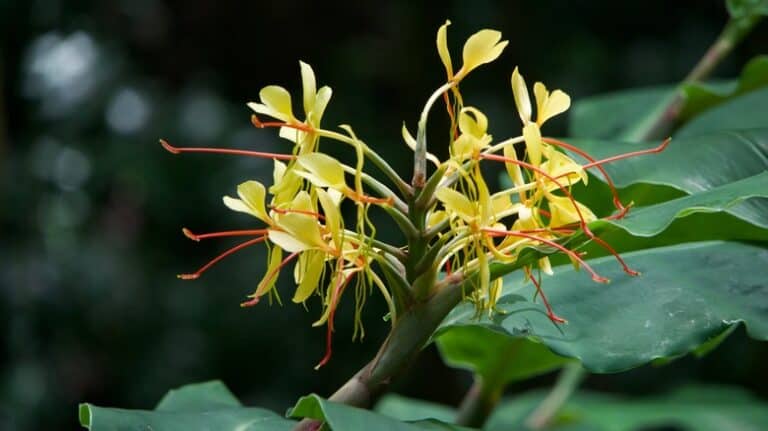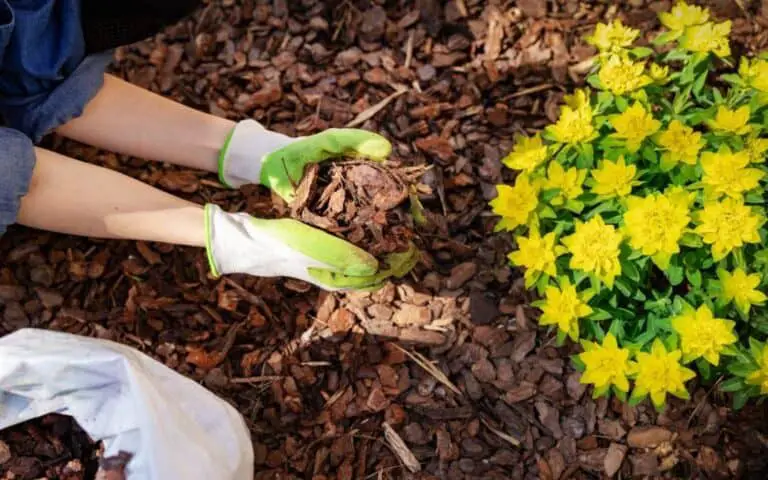Why You Should Consider Planting A Nicotiana Flowering Plant: Vibrant Beauty
Nicotiana flowering plants add vibrant color and pleasant fragrance to your garden. They are easy to grow and maintain.
Nicotiana, commonly known as flowering tobacco, is a fantastic addition to any garden. These plants produce beautiful, tubular flowers that come in various colors like white, pink, red, and green. Their sweet fragrance attracts beneficial pollinators such as bees and butterflies.
Nicotiana plants are relatively low-maintenance, thriving in both full sun and partial shade. They can be grown in garden beds, borders, or containers, making them versatile for different garden styles. Their long blooming season ensures your garden remains vibrant from late spring through early autumn. By planting Nicotiana, you enhance your garden’s aesthetic appeal and support local wildlife.
Introduction To Nicotiana
Planting a Nicotiana flowering plant can bring joy to any garden. These beautiful flowers are not only visually appealing but also easy to care for. Their sweet fragrance and vibrant colors make them a popular choice among gardeners. Let’s explore the fascinating world of Nicotiana.
History And Origin
Nicotiana, also known as tobacco flower, has a rich history. This plant originates from the Americas. Native tribes used Nicotiana for ceremonial purposes. Its scientific name honors Jean Nicot, a French diplomat. Jean Nicot introduced the plant to Europe in the 16th century. The plant quickly gained popularity for its beauty and fragrance.
Popular Varieties
There are many varieties of Nicotiana to choose from. Each variety offers unique colors and scents. Here are some popular types:
- Nicotiana alata: Known for its star-shaped flowers. Available in white, pink, and red.
- Nicotiana sylvestris: Features tall stems and drooping white flowers. Often called “Woodland Tobacco.”
- Nicotiana langsdorffii: Greenish-yellow blooms that attract pollinators. Ideal for cottage gardens.
- Nicotiana mutabilis: Blossoms change color from white to pink to deep rose. Offers a dynamic display.
Choosing the right variety depends on your garden’s needs. Whether you prefer tall stems or vibrant colors, there’s a Nicotiana for you.
| Variety | Color | Height |
|---|---|---|
| Nicotiana alata | White, Pink, Red | Up to 5 feet |
| Nicotiana sylvestris | White | Up to 6 feet |
| Nicotiana langsdorffii | Greenish-yellow | Up to 4 feet |
| Nicotiana mutabilis | White to Pink to Rose | Up to 5 feet |
Aesthetic Appeal
Planting a Nicotiana flowering plant can transform your garden into a visually stunning space. These plants offer unmatched aesthetic appeal that captures attention and soothes the soul. Let’s explore why these plants are a must-have for your garden.
Colorful Blooms
Nicotiana plants boast an array of vibrant colors that can brighten up any garden. Their blossoms come in hues of red, pink, white, and green. Each color creates a unique visual impact. These blooms make your garden lively and attractive.
- Red
- Pink
- White
- Green
Fragrance And Scent
The fragrance of Nicotiana flowers is another highlight. These plants emit a sweet scent that enhances your garden’s ambiance. The fragrance is especially noticeable in the evening.
Key Benefits:
- Sweet scent
- Evening fragrance
Enjoying the fragrance of Nicotiana flowers can be a delightful experience. The scent can create a relaxing and peaceful environment in your garden.
| Feature | Description |
|---|---|
| Colorful Blooms | Red, Pink, White, Green |
| Fragrance | Sweet, noticeable in the evening |
Growth And Care
Planting a Nicotiana flowering plant can brighten your garden. This plant is known for its lovely, fragrant flowers. To ensure it thrives, let’s explore its growth and care needs.
Ideal Growing Conditions
Nicotiana plants thrive in specific conditions. Here are the ideal growing conditions:
| Condition | Requirement |
|---|---|
| Light | Full sun to partial shade |
| Soil | Well-drained, fertile soil |
| Temperature | 60°F – 75°F (15°C – 24°C) |
Watering And Fertilizing
Proper watering and fertilizing are crucial for Nicotiana plants. Follow these simple tips:
- Watering: Keep the soil moist, not soggy. Water deeply once a week.
- Fertilizing: Use a balanced fertilizer every 4-6 weeks during the growing season.
By following these steps, your Nicotiana plant will grow strong and healthy.
Pest And Disease Resistance
The Nicotiana flowering plant stands out for its pest and disease resistance. This plant can thrive without much intervention. It’s a good choice for both novice and experienced gardeners.
Common Pests
The Nicotiana plant faces fewer pests than other plants. Common pests include aphids, whiteflies, and spider mites. These pests can harm many plants. However, Nicotiana plants resist them better.
| Pest | Impact | Control Method |
|---|---|---|
| Aphids | Suck plant sap | Insecticidal soap |
| Whiteflies | Drain plant nutrients | Sticky traps |
| Spider Mites | Weaken plant health | Neem oil |
Disease Prevention
Nicotiana plants are also resistant to many diseases. These plants rarely suffer from common plant diseases. The chance of fungal or bacterial infections is low.
- Plant in well-draining soil
- Avoid overwatering
- Ensure good air circulation
With these simple steps, your Nicotiana plant can stay healthy. Its natural resistance makes it a strong addition to any garden.
Environmental Benefits
Planting a Nicotiana flowering plant offers numerous environmental benefits. These plants not only enhance the beauty of your garden but also contribute positively to the ecosystem. Below, we explore two significant advantages: air purification and pollinator attraction.
Air Purification
Nicotiana plants help in purifying the air. They absorb harmful pollutants like formaldehyde and benzene. These pollutants are common in urban areas. The plant’s large leaves act like natural air filters. This makes them a perfect addition to city gardens.
Here’s a quick look at how Nicotiana plants purify the air:
| Pollutant | Effect |
|---|---|
| Formaldehyde | Reduces indoor air pollution |
| Benzene | Improves air quality |
Pollinator Attraction
Nicotiana flowers attract a variety of pollinators. These include bees, butterflies, and hummingbirds. The sweet fragrance of the flowers is irresistible to these pollinators. They play a crucial role in the ecosystem by aiding in plant reproduction.
Benefits of attracting pollinators:
- Increases biodiversity in your garden
- Helps in the pollination of other plants
- Supports the survival of pollinator species
Planting Nicotiana can turn your garden into a pollinator haven. It’s a small step with a big impact on the environment.
:strip_icc()/static.onecms.io__wp-content__uploads__sites__37__2020__03__nicotiana-flowers-2d707484-9a77938234554a9faad46ffd89f5b47c.jpg)
Credit: www.bhg.com
Companion Planting
Companion planting is a smart gardening technique. It involves growing different plants together. This practice has many benefits. One key benefit is pest control. Another is improved plant health. Planting Nicotiana with other plants can be very helpful.
Best Companion Plants
Nicotiana is a great companion plant. It has natural pest-repellent properties. Here are some of the best companion plants for Nicotiana:
- Tomatoes: Nicotiana helps repel aphids and whiteflies.
- Brassicas: These include cabbage and broccoli. Nicotiana helps deter cabbage worms.
- Peppers: Nicotiana protects peppers from pests like beetles.
- Carrots: Nicotiana can help keep carrot flies away.
Planting Tips
Follow these tips to plant Nicotiana successfully:
- Choose a sunny spot. Nicotiana loves sunlight.
- Ensure the soil is well-drained. Nicotiana dislikes soggy soil.
- Space plants 12-18 inches apart. This ensures good air circulation.
- Water regularly but do not overwater. Nicotiana needs moderate moisture.
- Use organic mulch. This keeps the soil moist and weed-free.
| Plant | Benefits |
|---|---|
| Tomatoes | Repels aphids, whiteflies |
| Brassicas | Deters cabbage worms |
| Peppers | Protects from beetles |
| Carrots | Keeps away carrot flies |
Seasonal Considerations
Planting a Nicotiana flowering plant can add beauty to any garden. Understanding the seasonal needs of Nicotiana is crucial. Proper care ensures healthy growth and vibrant blooms.
Spring And Summer Care
During spring, Nicotiana plants need to be planted after the last frost. They thrive in well-drained soil. Regular watering is essential in this season. Mulch around the base to retain moisture.
In summer, these plants enjoy full sun or partial shade. Ensure they get enough sunlight for better blooms. Water them deeply at least once a week. This helps keep the soil moist but not waterlogged. Fertilize them with a balanced fertilizer every month.
Fall And Winter Care
In fall, begin to reduce watering gradually. This helps the plant prepare for dormancy. Remove any dead or faded flowers to encourage more blooms. Apply a layer of mulch to protect the roots from cold temperatures.
During winter, Nicotiana plants may need to be brought indoors. This depends on your climate. If left outside, cover them with a frost cloth. This protects them from harsh frosts. Water sparingly during this time to prevent root rot.

Credit: www.gardensillustrated.com
Creative Uses
Planting a Nicotiana flowering plant can transform your garden and home. These beautiful plants offer a range of creative uses that enhance any space. Their unique appearance and delightful fragrance make them a favorite for various design ideas and arrangements.
Garden Design Ideas
Nicotiana flowering plants are perfect for creating stunning garden designs. Their vibrant colors and lovely scent attract pollinators, adding life to your garden. Here are some ideas for incorporating Nicotiana into your garden:
- Border Plantings: Use Nicotiana to create colorful borders along pathways.
- Mixed Flower Beds: Combine Nicotiana with other annuals for a diverse look.
- Night Gardens: Their fragrance intensifies at night, perfect for evening gardens.
These design ideas make your garden more attractive and enjoyable.
Indoor And Outdoor Arrangements
Nicotiana flowers are versatile and can be used both indoors and outdoors. Their beauty and fragrance make them ideal for various arrangements:
| Location | Arrangement Ideas |
|---|---|
| Indoor |
|
| Outdoor |
|
These ideas make Nicotiana flowering plants a versatile choice for any space.

Credit: www.housedigest.com
Frequently Asked Questions
What Are The Benefits Of Nicotiana Plants?
Nicotiana plants attract pollinators, deter pests, and offer a pleasant fragrance. They thrive in various garden settings.
How Do You Care For Nicotiana Flowers?
Water regularly, provide well-drained soil, and ensure partial to full sunlight. Deadhead spent blooms to encourage new growth.
Are Nicotiana Plants Toxic To Pets?
Yes, Nicotiana plants can be toxic if ingested by pets. Keep them out of reach of animals.
Conclusion
Planting a Nicotiana flowering plant brings beauty and fragrance to your garden. Its vibrant colors attract pollinators, enhancing biodiversity. Easy to grow and maintain, Nicotiana is a perfect choice for gardeners of all levels. Give your garden a fresh, appealing look with these lovely blooms.
Enjoy the benefits and charm they offer.







